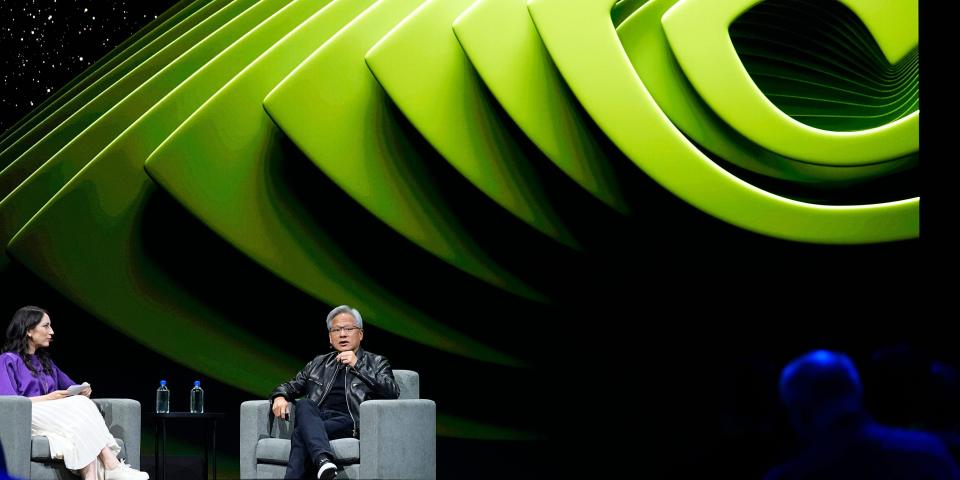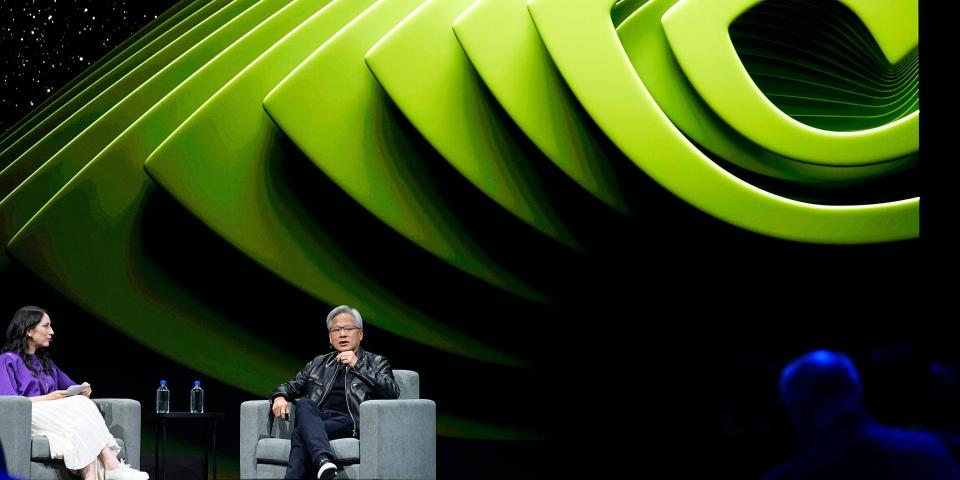
-
Nvidia stock has tumbled since it reported earnings last week.
-
Bank of America says the slide opens up an attractive buying opportunity.
-
The chip maker’s stock is trading near its lowest valuation in five years, the bank said.
Nvidia bulls may feel paralyzed by the sudden onslaught of headwinds blowing against the company, but to Bank of America, the move down in the stock price in the last week offers an attractive buying opportunity.
On Tuesday, shares of the semiconductor kingpin tanked, wrenching down its market value by $279 billion for the largest one-day decline in US corporate history.
The pullback came after the firm’s recent earnings report failed to meet the market’s most bullish expectations, adding to fears that the artificial intelligence rally may be losing steam.
The stock briefly continued its retreat on Wednesday, following a report that the firm received a subpoena from the Department of Justice. In all, the stock has fallen by as much as 15% since Nvidia released its second-quarter earnings in late August.
To Bank of America, the post-earnings skid marks a buying opportunity.
In a note released Thursday, the bank said that Nvidia is now hovering around its cheapest valuation in the past five years.
“While market forces could enhance near-term stock volatility, we continue to find NVDA valuation compelling at 27x CY25/FY26E consensus PE (or only ~20x PE at high-end of $5+ CY25 eps estimate),” analyst Vivek Arya wrote.
Compared to this, Nvidia price-to-earnings have ranged between the mid-20s to mid-60s over the past half-decade.
Investors who buy the stock now could be facing 54% upside, according to BofA’s price target of $165 per share.
This looks achievable, as Nvidia will remain a key beneficiary of AI investing and won’t always be pressured down by headwinds, the bank said. For instance, weak supply-side fundamentals should subside in the near term, the analysts noted.
While investors are disappointed by delays in the firm’s next-gen Blackwell chip, shipments should be confirmed over the next several weeks, BofA estimates.
In any case, the bank doesn’t anticipate demand for prior-gen Hopper chips to disappear, given how strong AI demand is.
Concerning regulatory headwinds, Nvidia has since denied receiving a subpoena from the DOJ.
Bloomberg — which first reported on the subpoena — later reported that the DOJ sent a civil investigative demand, citing a source close to the matter.
Though BofA assumes no impact from these developments, it noted that government cases are not uncommon against large US tech companies.
Finally, skepticism about AI’s potential remains a non-issue, the bank said, at least until 2026. Those concerned that the AI spending wave has yet to show results must simply be patient, the analysts wrote.
“The tech industry will give itself at least another 1-2 years of intense buildout of NVDA Blackwell chip with its 4x lift in AI training and 25x+ lift in inference. Efforts thus far with the first wave of large language models (LLM), using NVDA Hopper was just the teaser,” BofA wrote, anticipating that real AI capabilities will be unlocked by upcoming LLMs.
Read the original article on Business Insider
EMEA Tribune is not involved in this news article, it is taken from our partners and or from the News Agencies. Copyright and Credit go to the News Agencies, email news@emeatribune.com Follow our WhatsApp verified Channel




